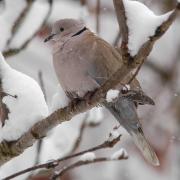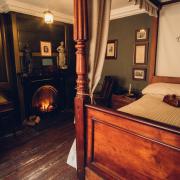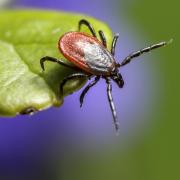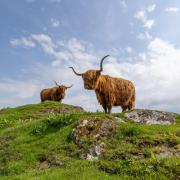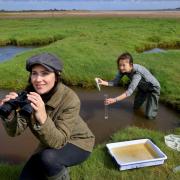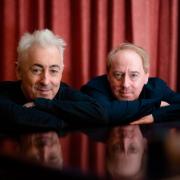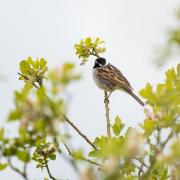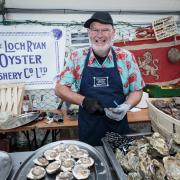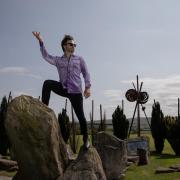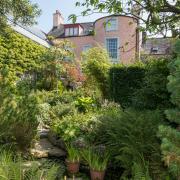Ravens are quite a common bird these days in Dumfries & Galloway, and I regularly see and hear them calling as they fly over towns such as Dumfries and Castle Douglas.
Ravens are big birds, weighing as much as 1.5kg, which is more than double that of a carrion crow and with a wingspan of up to 1.5m they are the largest of all the passerines/perching birds, which is an enormous group of birds and includes more than half of all avian species.

Going by size is all well and good if you’re lucky enough to see a raven and a crow side by side; or in the case of a single bird, have something to gauge its size by. However, that is often not possible in the field, especially for a bird in flight.
Ravens are not only bigger, they are chunkier, too. With a heavy head and bill, thick neck and barrel chest, they have the physique of a bodybuilder compared to the crow’s sleeker, all-round-athletic look. Then there’s the raven’s playful acrobatic flight, calling to each other, which sometimes involves periods of flying upside down. This contrasts with the crow’s more purposeful style.

In flight, the raven’s diamond-shaped tail is also distinctive, as are its raptor-like, fingered wing tips. If all else fails for your identification, just wait for it to call. The raven’s deep, throaty, resonant cronk makes a crow’s caw-caw-caw seem almost delicate.
Ravens are early nesters and I have known them to be sitting on eggs in early January or February in mild winters. They will use traditional nest sites and add twigs to the nest each year, sometimes resulting in huge nest structures.
Ravens build deep wool-lined nests on high cliffs, crags, ravines and trees, as well as occasionally on man-made structures such as dams, derelict buildings, telecommunications masts and pylon structures. They generally lay four to six eggs in February-March with the eggs hatching to coincide with a period when there is a good supply of food available for their young.

An extremely intelligent and sociable bird, the raven is steeped in mythology and legend and has even been adopted by the Scottish Raptor Study Group as an ‘honorary’ raptor. But ravens are once again being perceived in some parts of the country as a threat to upland sheep farming and red grouse shooting.
Ravens are omnivorous and opportunistic feeders with their diet consisting of a large variety of items, including sheep and deer carrion, hares, rabbits, voles, various invertebrates, eggs, berries and even human rubbish. In fact, as scavengers they have been described as UK’s substitute for a vulture.

Ravens or 'an fitheach’ in Gaelic, figure heavily in folklore. They were linked to darkness and death, but were also a guardian at times. Their presence at scenes of death links the bird with fear, maybe that is why people now look upon them unfavourably, maybe also because in mythology the raven was a mediator animal between life and death?
Everyone knows about the ravens at the Tower of London. However, it’s not known when the ravens first came to the Tower, and even there, their presence is surrounded by myth and legends. Unusually for birds of ill omen, the future of both our Country and Kingdom relies upon their continued residence, for according to legend, at least six ravens must remain, lest both Tower and Monarchy fall. Not much chance of those birds flying off though, as they have their wings clipped, so I think the Monarchy are quite safe in that respect.




